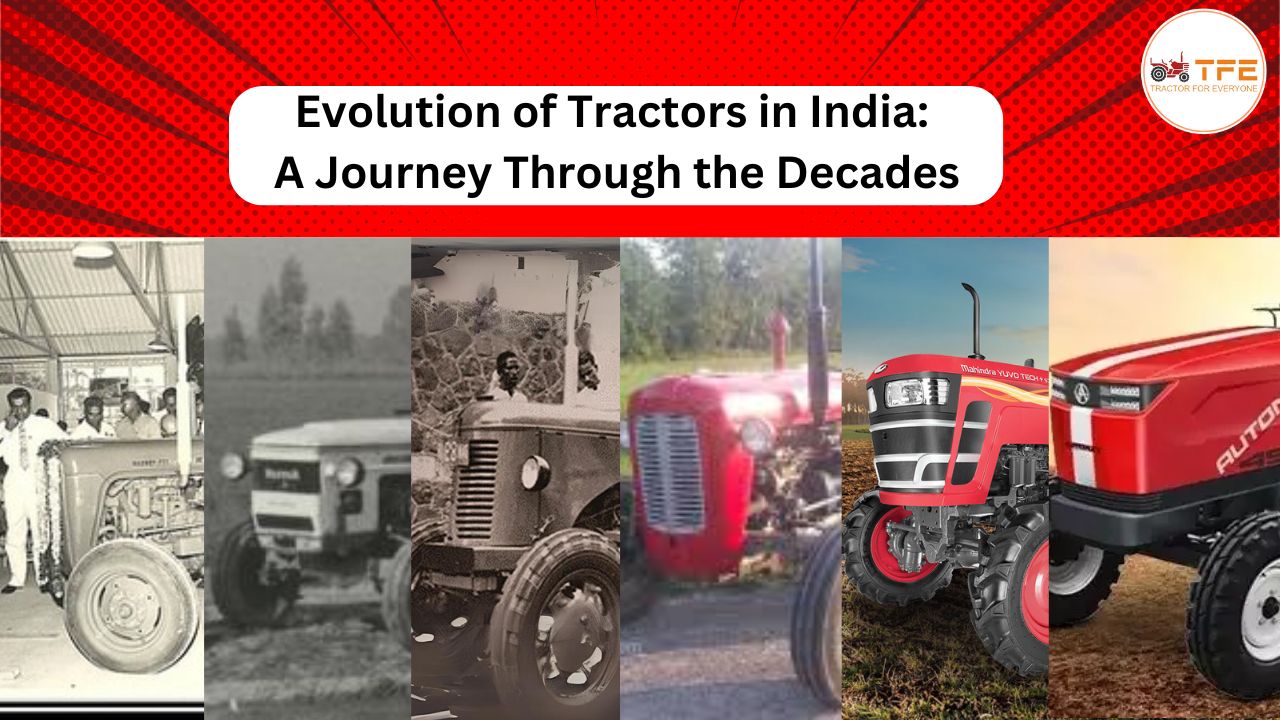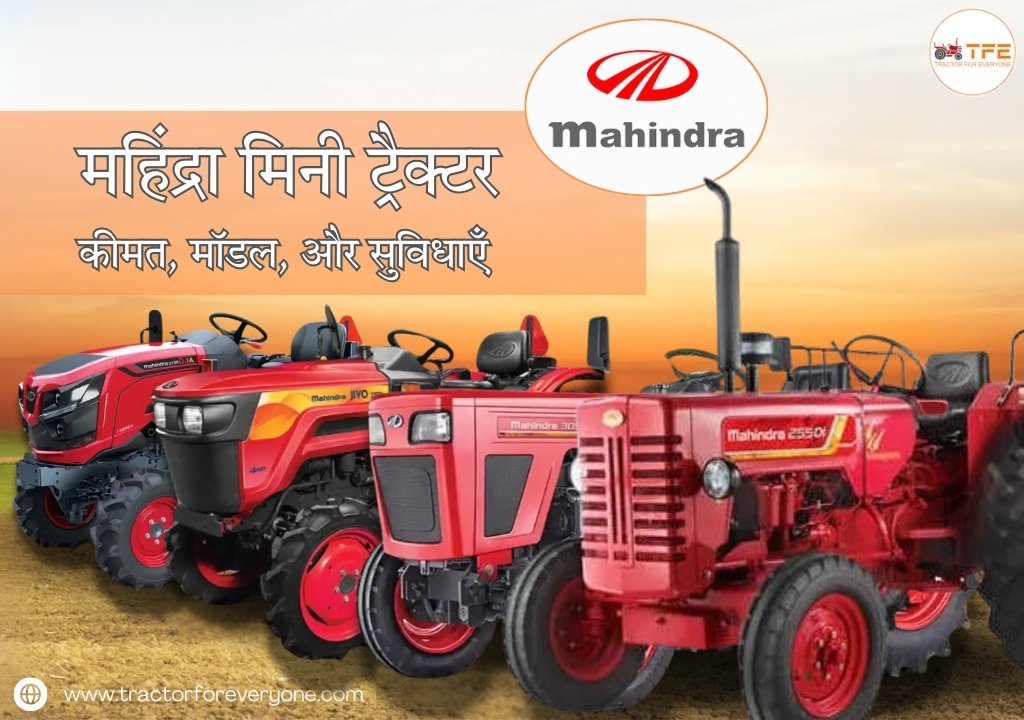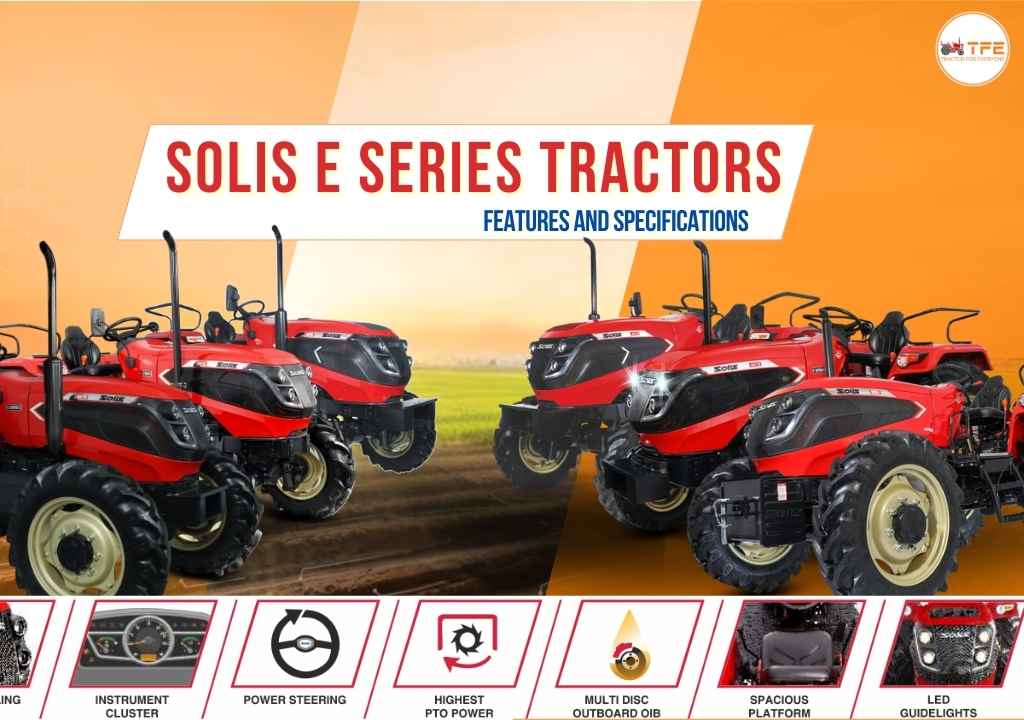Best Used Car, Services, Auto Parts, Rent Car Available for Buy and Sell Near By Go Ahead
- Swaraj Price 2025: Latest Swaraj Tractor Price List and On-Road Rates in India
- महिंद्रा मिनी ट्रैक्टर - कीमत, मॉडल, और सुविधाएँ
- Swaraj 855 FE Tractor Review 2025 Features, Price and Performance Explained
- Best Tractors in India 2025: Top 10 Picks for Every Farm Size
- महाराष्ट्र फार्मर आयडी: ऑनलाइन नोंदणी प्रक्रिया, कागदपत्रे आणि फायदे
- Sonalika Tractor Price 2025 Complete List of Models, Series and Latest Offers
- Swaraj Tractor Price List 2025: Best Tractors for Small, Medium & Large Farms
- Swaraj 744 FE Price, Features & On-Road Cost Explained for 2025
- Mahindra Tractors Price 2025: Complete List, Series-Wise Comparison and Best Models
- New Holland 3630 TX Super Plus+ Tractor Review 2025: Features, Price and Performance

Evolution of Tractors in India: A Journey Through the Decades
How Tractors Changed Farming in India
India's farming has come a long way over the past hundred years, and a big part of that change is because of tractors. Tractors have made farming faster and more efficient. From the early, simple machines to the high-tech tractors we see today, their story shows how much India has changed.
Let’s explore how tractors have evolved in India over the decades.
Early Days: Tractors First Arrive in India (1920s-1940s)
Tractors first came to India in the 1920s and 1930s, brought by the British to use on large farms and estates. The first models, like the Fordson tractor, were expensive and hard to maintain. Because of this, only big farms used them, and most Indian farmers continued using traditional methods with animals like oxen.
Post-Independence Era: India's Own Tractors and Government Support (1950s-1960s)
After India gained independence in 1947, the government wanted to modernize farming to produce more food and help farmers earn better incomes. In the 1950s and 1960s, the government started importing tractors and giving subsidies to make them more affordable for farmers. The first Indian-made tractor, the Eicher, was built in 1959.
During this time, companies like Mahindra & Mahindra, Escorts, and TAFE started making tractors in India. This made tractors cheaper and easier to get. These early tractors were designed to be strong and reliable, suitable for Indian farming conditions.
Green Revolution: Tractors Boost Food Production (1970s-1980s)
The Green Revolution in the 1960s and 1970s brought new seeds, fertilizers, and irrigation methods to increase food production. Tractors were essential during this period because they helped farmers prepare the land, plant seeds, and harvest crops much faster than before.
In the 1970s and 1980s, more farmers started using tractors. Companies like Mahindra & Mahindra and Escorts built more factories and created new tractor models with better features. The government continued to support farmers by providing financial help, making it easier for small farmers to buy tractors.
Technological Advancements: New Features and Global Partnerships (1990s-2000s)
In the 1990s and 2000s, tractors in India became even more advanced. The Indian economy opened up in 1991, allowing more international companies to enter the market. Companies like John Deere, New Holland, and Kubota brought in new technology and better manufacturing techniques.
Indian tractor manufacturers also improved their products, adding features like power steering and more comfortable seats. Tractors became more versatile, able to do many different farming tasks, not just ploughing and tilling.
Modern Era: High-Tech and Eco-Friendly Tractors (2010s-Present)
In the last ten years, the Indian tractor industry has continued to innovate, focusing on new technology and sustainability. Tractors today are smarter and more efficient, helping farmers manage their work better.
Smart and Connected Tractors: Using Technology to Improve Farming
Modern tractors come with GPS, telematics, and Internet of Things (IoT) technologies. These features help farmers track and manage their operations more precisely. This is called precision farming, where farmers use data to make better decisions about watering, fertilizing, and planting.
Electric and Hybrid Tractors: Moving Towards Eco-Friendly Farming
Electric and hybrid tractors are becoming popular as the industry moves towards sustainability. These tractors use less fuel and produce fewer emissions, helping protect the environment. Companies are investing in research to make these tractors more affordable and efficient.
Challenges and Future Prospects: Overcoming Barriers and Looking Ahead
Despite the progress, the Indian tractor industry faces challenges. Tractors are still expensive for many small farmers. There is also a lack of awareness about the latest technologies, and many farms are small and fragmented, making it hard to use large machines.
Future Outlook: The Exciting Future of Tractors in India
The future of tractors in India looks bright. The government is working to improve farmers' incomes, build better rural infrastructure, and promote digital farming. New technologies like autonomous tractors, which can operate without a driver, could change farming even more.
Conclusion: Looking Back and Moving Forward
The evolution of tractors in India shows how far Indian agriculture has come. From the early days of imported tractors to the modern era of smart and sustainable machines, this journey reflects India’s growth and technological advancements. As India continues to innovate, tractors will remain a crucial part of its farming future, helping millions of farmers improve their lives.
Write a Comment
Popular Blogs View All
-

Swaraj Price 2025: Latest Swaraj Tractor Price List and On-Road Rates in India
07/24/2025, POSTED BY ADMIN -

महिंद्रा मिनी ट्रैक्टर - कीमत, मॉडल, और सुविधाएँ
02/18/2025, POSTED BY ADMIN -

Swaraj 855 FE Tractor Review 2025 Features, Price and Performance Explained
07/19/2025, POSTED BY ADMIN
Popular Video View All
-

महाराष्ट्रात Second Hand Tractors ची उत्तम संधी! तुमच्या बजेटमध्ये, विश्वासार्ह ट्रॅक्टर मिळवा!
12/16/2025, POSTED BY ADMIN -

TFE Reaper Machine Working | Full Multi-Crop Cutting Process!
12/16/2025, POSTED BY ADMIN -

5 Things You Need to Know Before Buying a Solis E Series Tractor
05/17/2025, POSTED BY ADMIN

